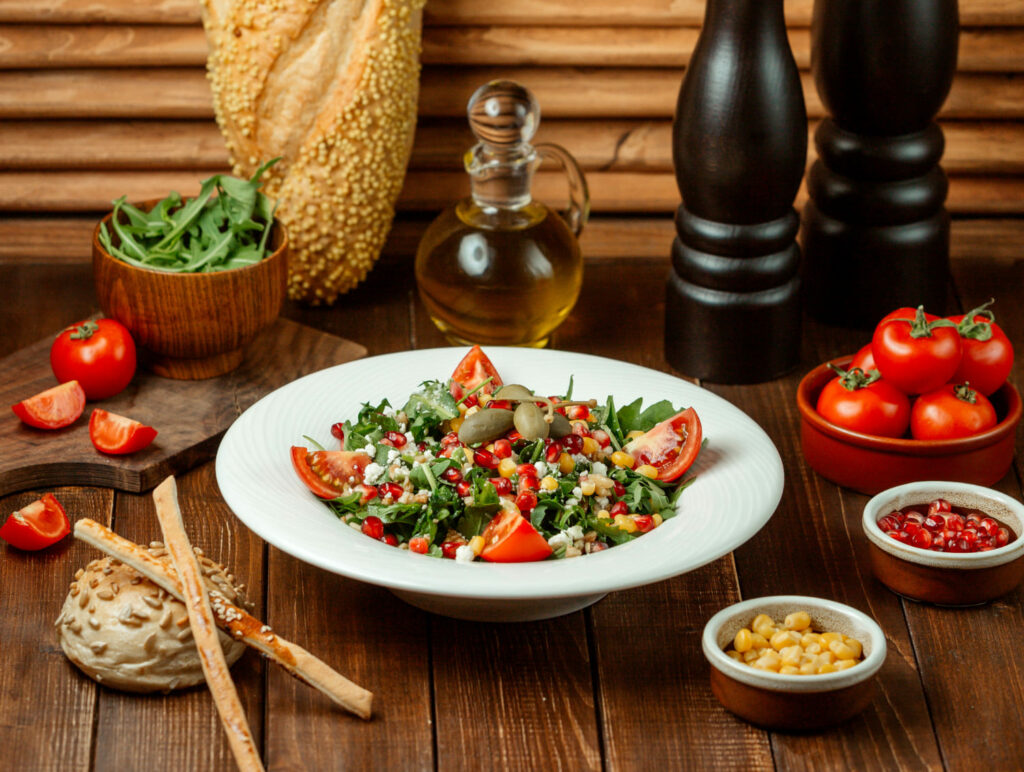In the realm of healthy eating, finding a balance between flavor and nutrition is key. One simple way to elevate your salads without sacrificing your health goals is by mastering the art of crafting a low-calorie balsamic vinaigrette.
Balsamic vinaigrette, when made with moderation in mind, can be a low-calorie dressing option. Using a balanced ratio of balsamic vinegar to olive oil and incorporating natural sweeteners like honey in controlled amounts keeps the calorie count in check.
A typical serving of homemade balsamic vinaigrette may contain around 50-80 calories, making it a lighter alternative to some commercial dressings.
In this comprehensive guide, we’ll walk through the steps to create a delightful dressing that not only tantalizes your taste buds but also keeps your calorie count in check.
Ingredients:
1. Balsamic Vinegar:
Varieties: Choose from a variety of balsamic vinegars available in the market. Traditional balsamic vinegar from Modena, Italy, is known for its rich, complex flavor, while aged balsamic vinegars offer a thicker consistency and intensified sweetness. Explore different aging periods for unique taste profiles.
Quality Matters: Opt for a high-quality balsamic vinegar with a density of at least 1.18, indicating a thicker texture. Check for the words “Aceto Balsamico Tradizionale” on the label, a mark of authenticity.
Flavored Options: Experiment with flavored balsamic vinegars, such as raspberry, fig, or pomegranate, for a creative twist. These infusions can add depth and complexity to your vinaigrette.
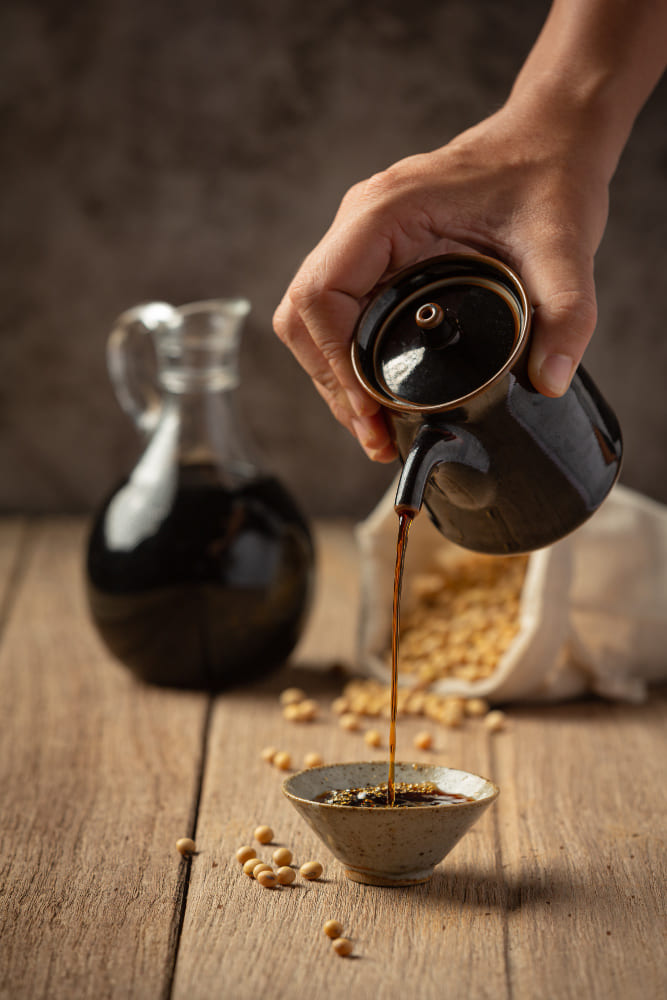
Balsamic vinegar is rich in antioxidants, particularly polyphenols. These compounds help combat oxidative stress in the body, reducing inflammation and supporting overall health.
Studies have shown that the antioxidants in balsamic vinegar may have potential health benefits, including cardiovascular protection and improved insulin sensitivity.
2. Extra Virgin Olive Oil:
Cold-Pressed Elegance: Select a cold-pressed extra virgin olive oil to preserve its natural flavors and nutritional benefits. Cold-pressed oils undergo minimal processing, retaining the olive’s fruity and peppery characteristics.
Regional Varieties: Explore olive oils from different regions, such as Spanish, Italian, or Greek, to experience subtle variations in taste. Single-origin oils provide a distinct terroir, much like fine wines.
Certifications: Look for certifications like the “Protected Designation of Origin” (PDO) or “California Olive Oil Council” (COOC) seal to ensure authenticity and quality.
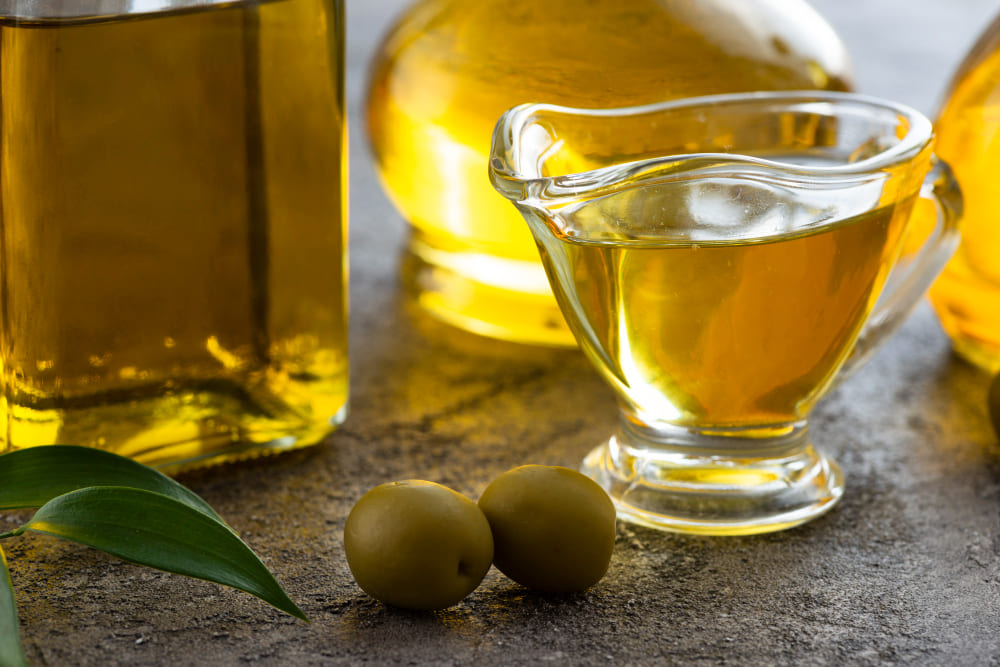
Extra virgin olive oil, a key component of balsamic vinaigrette, is renowned for its heart-healthy monounsaturated fats. These fats can contribute to lowering bad cholesterol levels and reducing the risk of heart disease.
The monounsaturated fats in olive oil are also associated with anti-inflammatory effects, which may support overall cardiovascular health.
3. Dijon Mustard:
Emulsification Magic: Dijon mustard not only contributes a tangy flavor but also acts as a natural emulsifier, helping to bind the vinegar and oil. Choose a smooth Dijon for a consistent texture.
Grainy Options: Experiment with whole-grain Dijon mustard for added texture and a rustic appearance in your vinaigrette. The whole mustard seeds provide a delightful crunch.
Alternative Mustards: For those seeking variety, try different mustard varieties like spicy brown or honey mustard to tailor the vinaigrette to your taste preferences.
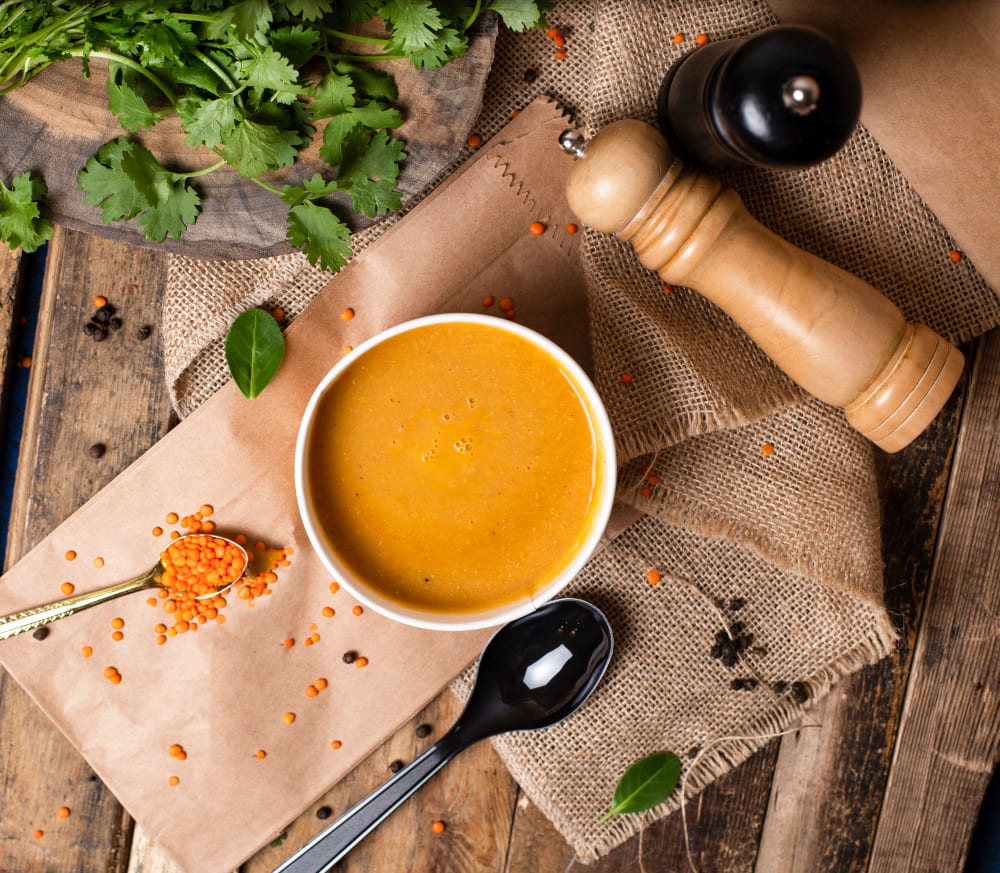
Dijon mustard, a common ingredient in balsamic vinaigrette, is a low-calorie condiment that adds flavor without significantly impacting the overall caloric content.
4. Garlic (Optional):
Freshness Matters: If opting for garlic, use fresh cloves for the best flavor. Ensure they are firm and free from sprouting. Mince the garlic finely for a subtle infusion.
Roasted Garlic Variation: Roasted garlic provides a milder, sweeter flavor. Roast whole garlic bulbs in the oven until soft and golden, then squeeze out the cloves into the vinaigrette mixture.
Infused Olive Oil: Enhance the garlic flavor by infusing the olive oil with garlic. Gently heat the oil with minced garlic, then let it cool before incorporating it into the vinaigrette.
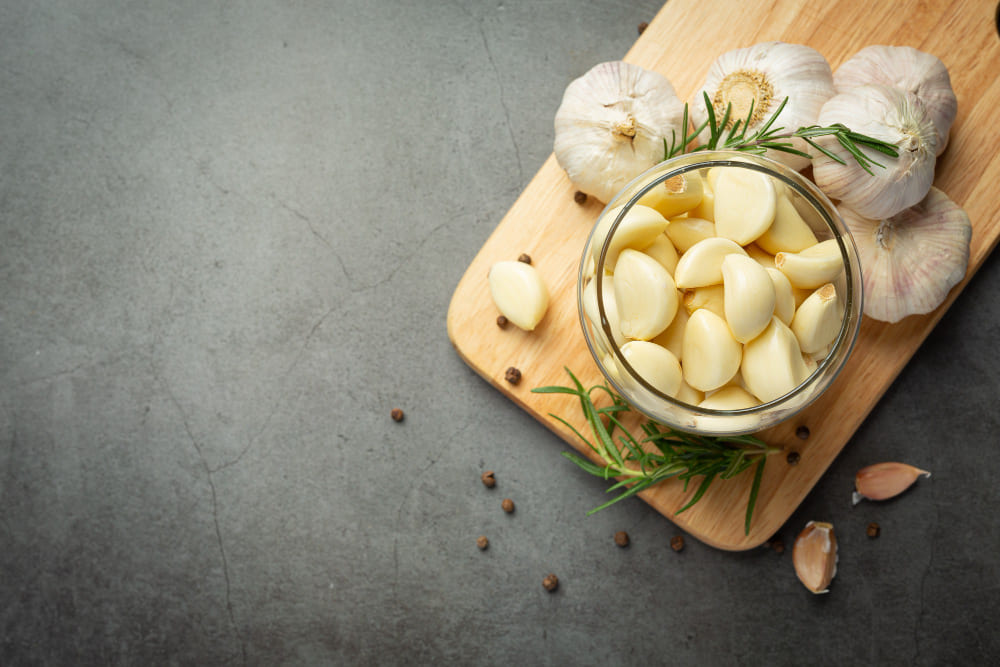
Garlic, another optional ingredient, not only enhances the taste but also brings potential health benefits, including immune system support and cardiovascular health.
5. Honey or Maple Syrup:
Natural Sweeteners: Use honey or maple syrup as natural sweeteners to balance the acidity of the balsamic vinegar. Start with a small amount and adjust based on your desired level of sweetness.
Varietal Honey: Experiment with different types of honey, such as wildflower, clover, or orange blossom, each imparting unique floral notes to the vinaigrette.
Grade A Maple Syrup: If using maple syrup, opt for Grade A for a lighter, more delicate sweetness. Consider exploring different maple syrup grades for nuanced flavors.
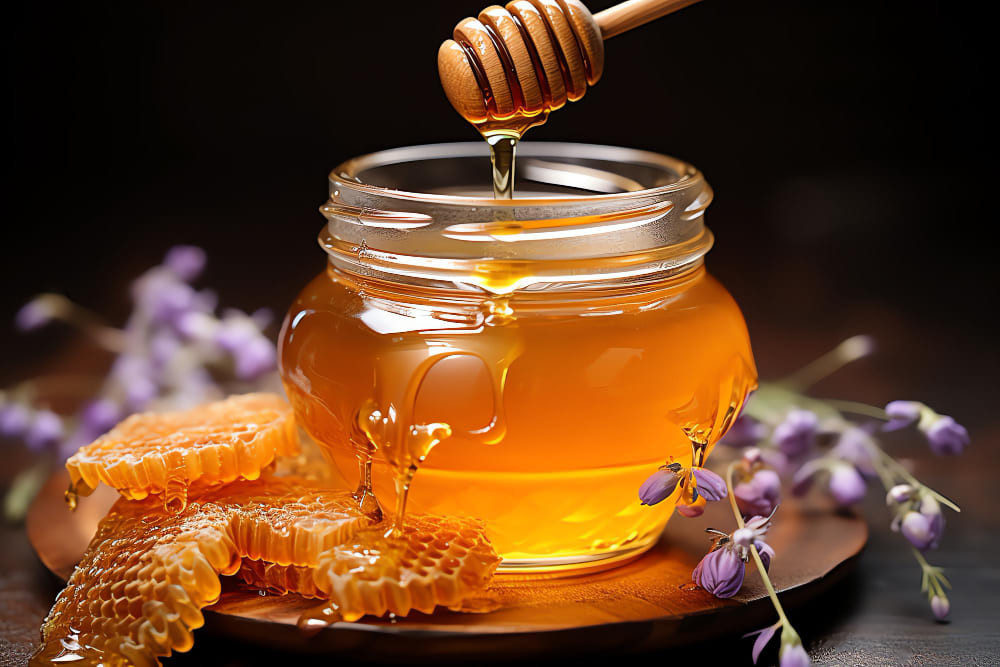
6. Salt and Pepper:
Sea Salt or Kosher Salt: Choose high-quality sea salt or kosher salt for a clean, pure taste. These salts dissolve more easily in the vinaigrette, ensuring even distribution.
Freshly Ground Pepper: Grind whole peppercorns just before adding them to the vinaigrette for a burst of fresh flavor. Experiment with colored peppercorns for visual appeal.
Herb-Infused Salts: Elevate your vinaigrette with herb-infused salts like rosemary or garlic salt for an additional layer of flavor.
READ ALSO: 15 Best Low-Calorie Biscuits for Weight Loss
Instructions:
1. Basic Ratio:
Understanding Ratios: Start with a classic ratio of 3 parts balsamic vinegar to 1 part extra virgin olive oil. This ratio serves as a baseline, allowing you to customize the vinaigrette to your taste preferences.
Gradual Adjustments: Begin by whisking or shaking the initial ratio in a bowl or jar. Taste the vinaigrette and make gradual adjustments. If you prefer a more pronounced tanginess, increase the vinegar ratio; for a milder flavor, add more olive oil.
Experimentation: Don’t hesitate to experiment with ratios based on the specific balsamic vinegar and olive oil you’ve chosen. Different varieties may require slight modifications for the perfect balance.
2. Combine Ingredients:
Whisking Technique: Whisk together the balsamic vinegar, extra virgin olive oil, and Dijon mustard using a fork or a small whisk. This manual blending ensures that the ingredients emulsify properly, creating a uniform texture.
Jar Shake Method: Alternatively, if you prefer convenience, combine the ingredients in a jar with a tight-fitting lid and shake vigorously. This method simplifies the emulsification process and allows for easy storage.
3. Sweeten it Up:
Start Small: Add a small amount of honey or maple syrup to the mixture. Start with a teaspoon and taste before adding more. The goal is to achieve a subtle sweetness that balances the acidity without overwhelming the vinaigrette.
Alternatives: Explore alternative sweeteners like agave nectar or stevia for a lower-calorie option. Each sweetener brings its unique flavor profile, so adjust quantities accordingly.
4. Garlic Infusion (Optional):
Mincing Techniques: If incorporating garlic, finely mince the cloves for an even distribution of flavor. Consider using a garlic press for a smoother texture.
Roasting Process: For roasted garlic, preheat the oven, slice the top of a garlic bulb, drizzle with olive oil, wrap in foil, and roast until soft. Squeeze the cloves into the vinaigrette mixture for a milder, caramelized flavor.
Infused Olive Oil Method: To infuse olive oil with garlic, gently heat the oil with minced garlic in a saucepan, then let it cool before adding it to the vinaigrette.
5. Seasoning:
Tasting and Adjusting: Season the vinaigrette with salt and pepper to taste. Remember, a little goes a long way, so taste as you go and make adjustments gradually.
Herbs and Spices: Experiment with additional herbs and spices, such as oregano, thyme, or basil. Fresh herbs impart a vibrant, aromatic quality, while dried herbs provide depth. Adjust quantities based on personal preference.
6. Emulsify:
Whisking Techniques: Whisk the vinaigrette vigorously to achieve proper emulsification. This step is crucial for creating a smooth, well-blended dressing. Ensure that the oil and vinegar are fully incorporated.
Shaking Method: If using a jar, ensure the lid is tightly secured and shake the mixture until well combined. This method is efficient and prevents separation.
7. Taste and Adjust:
Critical Evaluation: Taste the vinaigrette and assess the overall flavor profile. Pay attention to the balance of sweetness, acidity, and richness. Adjust the ratios or add more seasoning as needed.
Customization: The beauty of homemade vinaigrette lies in customization. Feel free to tailor the dressing to your liking by experimenting with different ingredients and quantities until you achieve the perfect balance.
8. Store:
Proper Storage: Pour the vinaigrette into a glass jar or a container with a tight-fitting lid. Store it in the refrigerator for up to a week. Before each use, give the container a good shake to re-emulsify any separated ingredients.
Flavor Enhancement Over Time: Note that if you’ve infused the vinaigrette with garlic or herbs, the flavors may intensify and meld over time, enhancing the overall taste of the dressing.
Tips:
1. Experiment with Flavors:
Herb Varieties: Beyond traditional herbs like oregano and thyme, explore a variety of herbs such as tarragon, rosemary, or even mint. Fresh herbs add vibrancy, while dried herbs offer depth. Combine multiple herbs for a complex flavor profile.
Citrus Zest: Enhance freshness with citrus zest. Lemon or orange zest adds a bright, citrusy note that complements the richness of the balsamic vinegar and olive oil.
Spice Infusion: For a spicy kick, experiment with chili flakes or a dash of cayenne pepper. This adds a subtle heat that can elevate your vinaigrette, especially if you enjoy a bit of spice.
2. Use in Moderation:
Calorie Awareness: While crafting a low-calorie vinaigrette, remember that calories can still add up. Use the dressing in moderation to maintain a healthy balance.
Portion Control: Consider using a small ladle or spoon to drizzle the vinaigrette over your salad. This helps control the amount you use, ensuring you enjoy the flavor without excess calories.
3. Pairing:
Greens and Beyond: While this vinaigrette shines on mixed greens, don’t limit yourself. Try it on roasted vegetables, grilled chicken, or even as a marinade for meats. The versatility of balsamic vinaigrette extends beyond salads.
Cheese Combinations: Experiment with different cheese pairings. Crumbled feta, goat cheese, or shaved Parmesan can add a delightful creaminess that complements the tangy vinaigrette.
4. Quality Matters:
Invest in Quality Ingredients: The quality of your ingredients significantly impacts the final taste. Splurge on a well-aged balsamic vinegar and a high-grade extra virgin olive oil for a truly exceptional vinaigrette.
Freshness Check: Regularly check the freshness of your ingredients, especially the olive oil. Olive oil can become rancid over time, affecting the overall taste of your vinaigrette.
5. Customization for Dietary Needs:
Gluten-Free Options: Ensure your Dijon mustard is gluten-free if you have dietary restrictions. Many mustard brands offer gluten-free varieties to accommodate different needs.
Vegan Alternatives: If following a vegan diet, substitute honey with maple syrup or agave nectar. Ensure all ingredients align with your dietary preferences.
6. Storage Techniques:
Airtight Containers: Store your vinaigrette in airtight containers to prevent oxidation. This helps maintain the freshness of the ingredients and extends the shelf life of the dressing.
Separation Solutions: If separation occurs, let the vinaigrette come to room temperature before shaking or whisking. This allows the olive oil to liquefy, making it easier to re-emulsify.
7. Temperature Considerations:
Serve at Room Temperature: Take the vinaigrette out of the refrigerator a few minutes before serving. This brings the flavors to their full potential as the olive oil warms up.
Warm Vinaigrette: Experiment with serving a slightly warmed vinaigrette over steamed vegetables or a warm salad for a comforting twist.
8. Dress Just Before Serving:
Crispness Preservation: To maintain the crispness of your salad greens, dress them just before serving. This prevents wilting and ensures a fresh, satisfying crunch.
Last-Minute Drizzle: If preparing salads in advance, keep the vinaigrette separate and drizzle it on just before serving. This preserves the integrity of the ingredients.
9. Balance with Protein and Fiber:
Protein-Rich Additions: Consider adding protein-rich ingredients like grilled chicken, chickpeas, or quinoa to your salads. This not only boosts nutritional content but also makes the salad more satiating.
Fiber Boost: Incorporate fiber-rich elements such as nuts, seeds, or whole grains to enhance the salad’s texture and nutritional value.
10. Sensory Exploration:
Engage Your Senses: When tasting and adjusting, engage your senses. Consider the aroma, the visual appeal, and the overall mouthfeel. Crafting the perfect vinaigrette is as much an art as it is a science.
Guest Preferences: When serving the vinaigrette to others, consider their preferences. Some may prefer a more pronounced acidity, while others might enjoy a sweeter note. Personalize your approach based on your audience.




